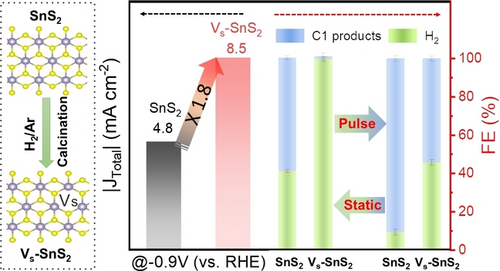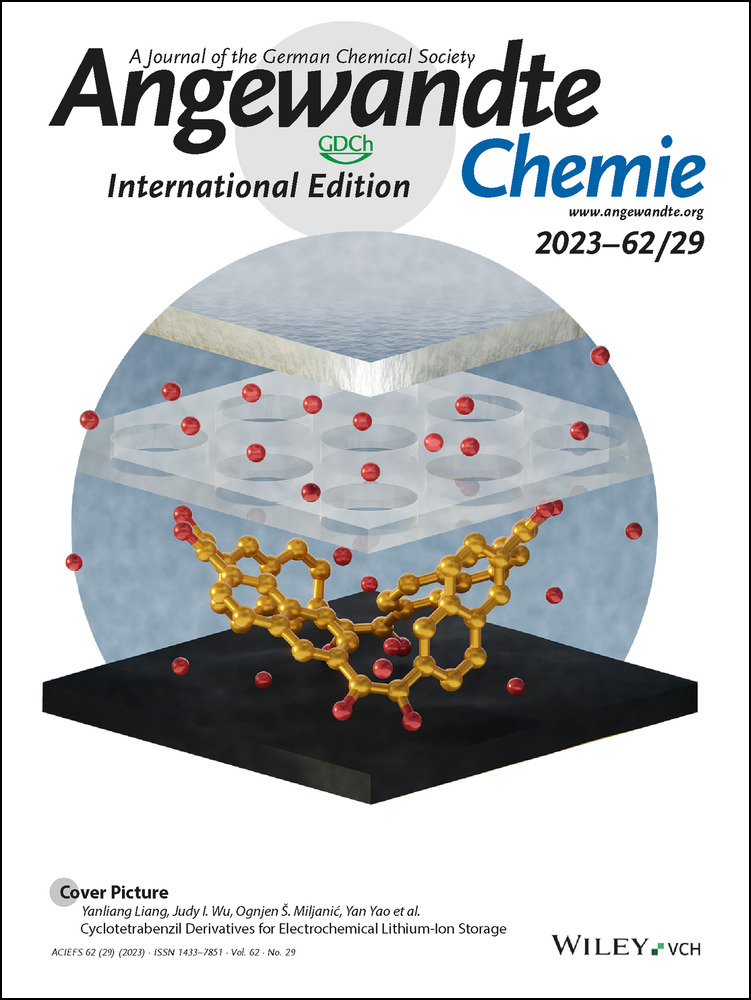Insights into Electrochemical CO2 Reduction on SnS2: Main Product Switch from Hydrogen to Formate by Pulsed Potential Electrolysis
Graphical Abstract
Introducing S-vacancies into SnS2 (Vs-SnS2) can significantly improve the electrocatalytic activity of CO2RR but leads to exclusive H2 evolution under static potential electrolysis. Pulsed potential electrolysis results in in situ generation of partially oxidized SnS2−x in the catalyst, which leads to a switch of the main product from hydrogen to formate during the CO2RR with the oxide phase selective to formate and the S-vacancy to H2.
Abstract
Tin disulfide (SnS2) is a promising candidate for electrosynthesis of CO2-to-formate while the low activity and selectivity remain a great challenge. Herein, we report the potentiostatic and pulsed potential CO2RR performance of SnS2 nanosheets (NSs) with tunable S-vacancy and exposure of Sn-atoms or S-atoms prepared controllably by calcination of SnS2 at different temperatures under the H2/Ar atmosphere. The catalytic activity of S-vacancy SnS2 (Vs-SnS2) is improved 1.8 times, but it exhibits an exclusive hydrogen evolution with about 100 % FE under all potentials investigated in the static conditions. The theoretical calculations reveal that the adsorption of *H on the Vs-SnS2 surface is energetically more favorable than the carbonaceous intermediates, resulting in active site coverage that hinders the carbon intermediates from being adsorbed. Fortunately, the main product can be switched from hydrogen to formate by applying pulsed potential electrolysis benefiting from in situ formed partially oxidized SnS2−x with the oxide phase selective to formate and the S-vacancy to hydrogen. This work highlights not only the Vs-SnS2 NSs lead to exclusively H2 formation, but also provides insights into the systematic design of highly selective CO2 reduction catalysts reconstructed by pulsed potential electrolysis.
Open Research
Data Availability Statement
The data that support the findings of this study are available from the corresponding author upon reasonable request.





